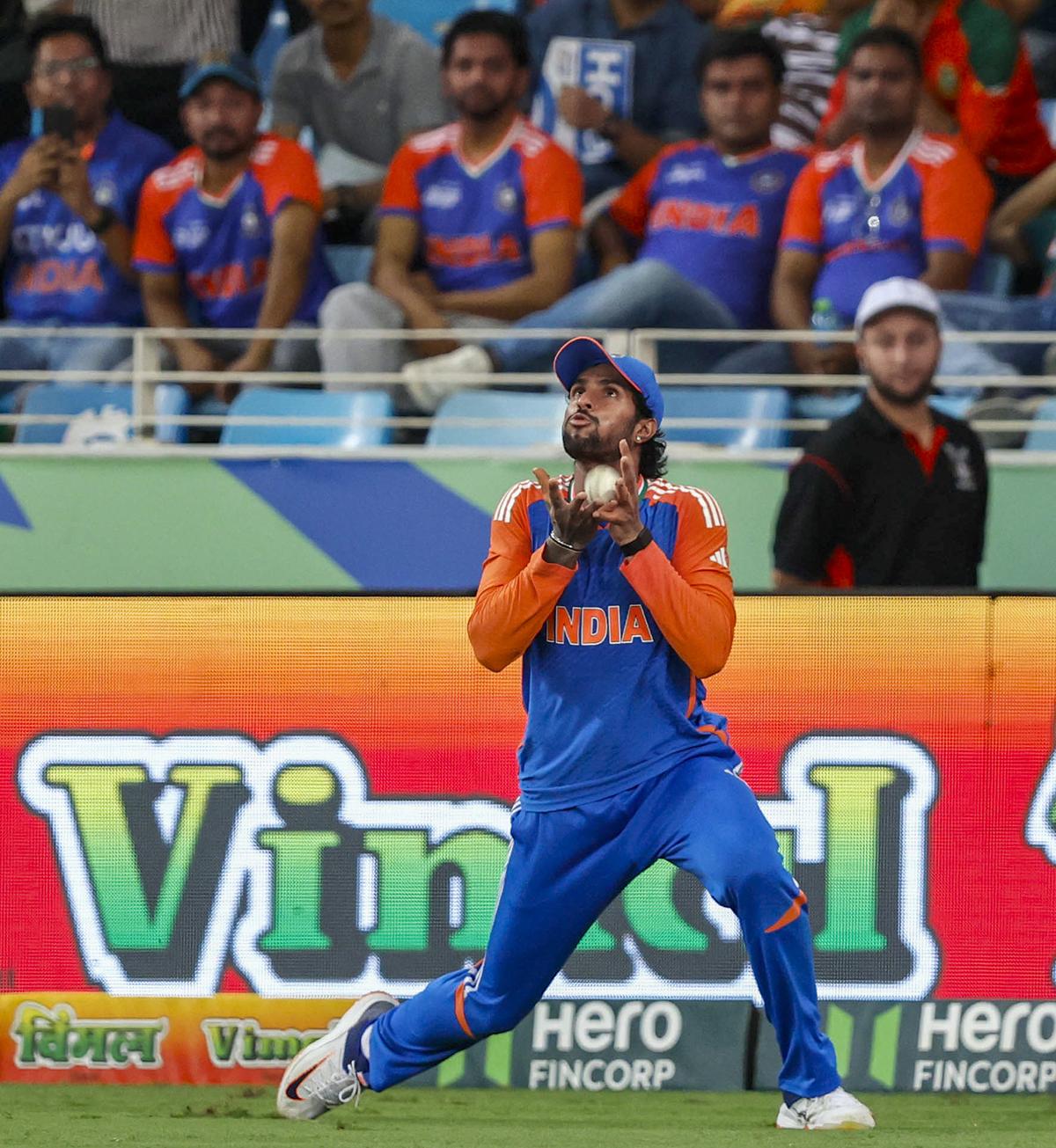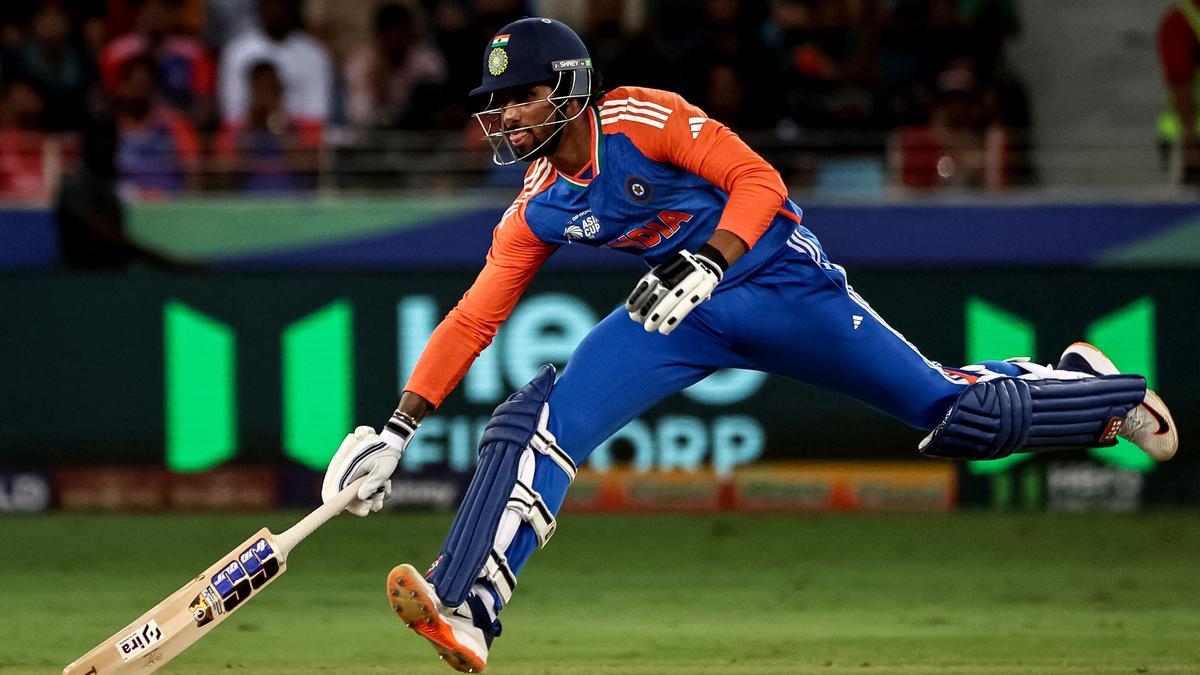It must have taken Tilak Varma, all of 22 years old and with just one half-century in his preceding 15 innings, loads of courage to walk up to his captain and ask for the No. 3 position occupied with such distinction by the No. 1 T20I batter in the world.
But such is the culture within Indian teams across formats that the left-hander from Hyderabad thought little of approaching Suryakumar Yadav in Centurion last November, seeking a promotion in the third of four games against South Africa.
Suryakumar would have been well within his rights to turn that request down, but that’s not how leaders conduct themselves. Secure in his space and eager to give his young charges the best opportunity to be the best version of themselves, he readily agreed to that request – much like Rohit Sharma and Rahul Dravid had when Shubman Gill asked to drop down to No. 3 in the Test series in the Caribbean in July 2023 – with spectacular results.
Tilak celebrated his return to No. 3, where he had brought up his second half-century against Bangladesh in the Asian Games in October the previous year, with a breathtaking unbeaten 107, an essay that knocked the stuffing out of the Proteas. As if to show that it was no flash in the pan, he backed it up with 120 not out in the following outing, an even more furious compilation off 47 deliveries with nine fours and ten sixes, becoming only the second Indian after Sanju Samson to register successive T20I tons.
Fearless approach
Every inch the new-age Indian batter who wears fearlessness as an armour but who isn’t invested in the limited-overs game so much that he doesn’t revere the longer format – he averages 52.06 in 22 first-class games – Tilak is now one of the indispensables so far as the 20-over game is concerned. It won’t be long before he is seriously considered for the two other international variants. After all, this is a young man with strong basics which should enable him to flourish, no matter where he plays, against whom and in whichever iteration he is asked to portray his skills in.
Aggressive without being flashy and mixing orthodoxy with cheekiness, Tilak fits the image of the quintessential T20 batter to a ‘T’. He is quick on his feet, equally good on the off-side as the on, against pacers and spinners alike, off front foot and bat. He can play in the traditional ‘V’, but he doesn’t think twice about reverse-sweeping his first ball if he believes it is in his hitting arc. There is no hesitation or self-doubt. To be young and intrepid is a great gift but it can sometimes trigger recklessness. Tilak’s USP has been to disassociate the carefree from the careless, which is why in a format that challenges consistency, he has been able to average 46.88 while striking at 151.25 per 100 balls faced in 28 T20I innings.
Lest one should comprehend that Tilak can only succeed at No. 3, it’s worth pointing out that his first three outings internationally, more than two years back in the Caribbean, brought him scores of 39, 51 and 49 not out at No. 4. He has batted at Nos. 5 and 6 (twice each) and once at seven, but that has been more because the team management has felt the need for other batters to get some batting-time in a game situation. He has occupied the No. 3 or No. 4 position 23 times in his fledgling international career, which is where he will find himself in the foreseeable future as India continue their preps for the home World Cup early next year.
What makes Tilak such an accomplished performer, apart from his immense skills, is his unflappable temperament and the ability to read the game superbly. It’s as if he knows instinctively when to hold back and when to press ahead, which bowlers to be respectful of and whom to target. And while he does possess the full repertoire, his shot-selection is impeccable. Like Abhishek Sharma, who can do no wrong at the moment, Tilak is a great believer in targeting the straight field because that’s likely to be the least populated area of the ground. But, also like Abhishek, he doesn’t premeditate or move around in his crease, which can appear fancy and footloose but does put batters out of kilter and in bad positions when they are about to make contact with the ball.
One of the many other factors that work in his favour is his left-handedness. Gautam Gambhir, the head coach, is almost fixated on having a left-right combination operating in tandem at all stages of the innings. In the Asia Cup squad, India have four right-handers and as many left-handers in the top eight; five of those batters have at least one international century in the 20-over format while those who don’t – Hardik Pandya, Axar Patel and Shivam Dube – have almost exclusively batted either in the second half of the innings or in the second half of the batting order unless they have been promoted specifically to push up the rate of scoring.
Because he invariably bats in the first four, Tilak has the luxury/responsibility of setting the tone for those to follow. His propensity to suss the conditions, the surface and the bowling allows him to send messages back to the dugout so that the team doesn’t try to overreach and eye a target out of bounds owing to a combination of the above factors. This early in his cricketing career, he is already a leader in his own right and while the profusion of options might not thrust him into an official leadership capacity anytime soon, captains will rely on him for inputs and wisdom whenever they feel the need. Tilak’s confidence will allow him to be frank and open, a further sign of how the unit functions as one and where the line between ‘seniors’ and ‘juniors’ is severely blurred, if not non-existent.
While his primary, and strongest, suit is batting, Tilak the off-spinner too occasionally rears his head, like he did on Wednesday night when Suryakumar entrusted him with the final over in the Super Four game against Bangladesh. True, the game had been won and lost by then, India overcoming a slew of dropped catches to stamp their authority in no uncertain terms.

Suryakumar had others to turn to, not least Dube, who came into the game with five wickets under his belt. But he went with Tilak, who had done a lot of bowling in the nets in the lead-up to last Sunday’s showdown against Pakistan and who will average comfortably more than one ball per game (as on date, he has bowled 39 deliveries in 30 T20Is) not too long from now.
All-round skills
T20 cricket has seldom been the domain of specialists. There will be some extraordinary performers, batters and bowlers like, who can get away with being unidimensional; India alone possesses two of them in Suryakumar and Bumrah. But historically, the multi-skilled players have been much in demand because they add to balance and give team managements greater flexibility in team selection. Tilak will never be the frontline spinner but, if like Dube, he can be relied upon to bowl a couple of tidy overs, he can serve as insurance against a bad day in the office for one of the regular bowlers. Maybe at 22, he doesn’t have much say in the matter, but the wholeheartedness with which he plunges into bowling during practice sessions speaks volumes of his desire to be more than just someone who rolls his arm over.
Swift across the field and with hands that are safe as houses, Tilak has been one of India’s honourable exceptions in a tournament where they have put down catches as if holding them is a crime.
In the last two outings alone, in the Super Fours, India have shelled nine catches. Sure, the Ring of Fire that the lights around the Dubai International Cricket Stadium resemble has played its part, but even so, it is embarrassing to see an otherwise accomplished and professional outfit repeatedly dropping regulation catches.
As the carnage has unfolded around him, Tilak has shown nerves of steel and hands that can be relied upon. Saif Hassan, the Bangladesh opener, was reprieved four times as he made a career-best 69 but when he was called into action, Tilak expertly held on to offerings from Mohammad Saifuddin and Rishad Hossain to dispel the rumour that dropping catches was spreading through the Indian ranks like a pandemic.
It’s been an interesting, sometimes challenging journey for the young Hyderabadi who had to return from the ‘A’ tour of Bangladesh in December 2022 due to an auto-immune problem that led to weight loss and placed massive physical and mental demands on a 20-year-old.
Tilak had just made a name for himself with Mumbai Indians in his maiden season in the IPL, amassing 397 runs in an otherwise disappointing campaign for the franchise. But instead of allowing the setback to bog him down, he bounced back with great help from the medical team, lining up for IPL 2023 and again showcasing his class with 347 runs at an enhanced strike-rate of 164.11.
That potentially career-threatening ailment early doors has taught Tilak the perils of taking anything, including form, for granted. He might have secretly nursed ambitions of breaking into the Test squad for the two home games against West Indies next month, but he also knows that there is a long way to go before that dream materialises. Any chance he might have had of staking his claim with a mountain of Ranji Trophy runs has disappeared, given that India are scheduled to tour Australia in the middle of next month for a white-ball showdown, which will be followed by five T20Is at home against South Africa in November-December.
For now, Tilak’s world revolves around T20Is, with the World Cup in February-March as the greatest motivation. Who’s to say, given the rambunctious start he has made, that he won’t be one of the stars in the flagship extravaganza.

